How Does Email Marketing Increase Sales? My Honest Experience and What the Data Says
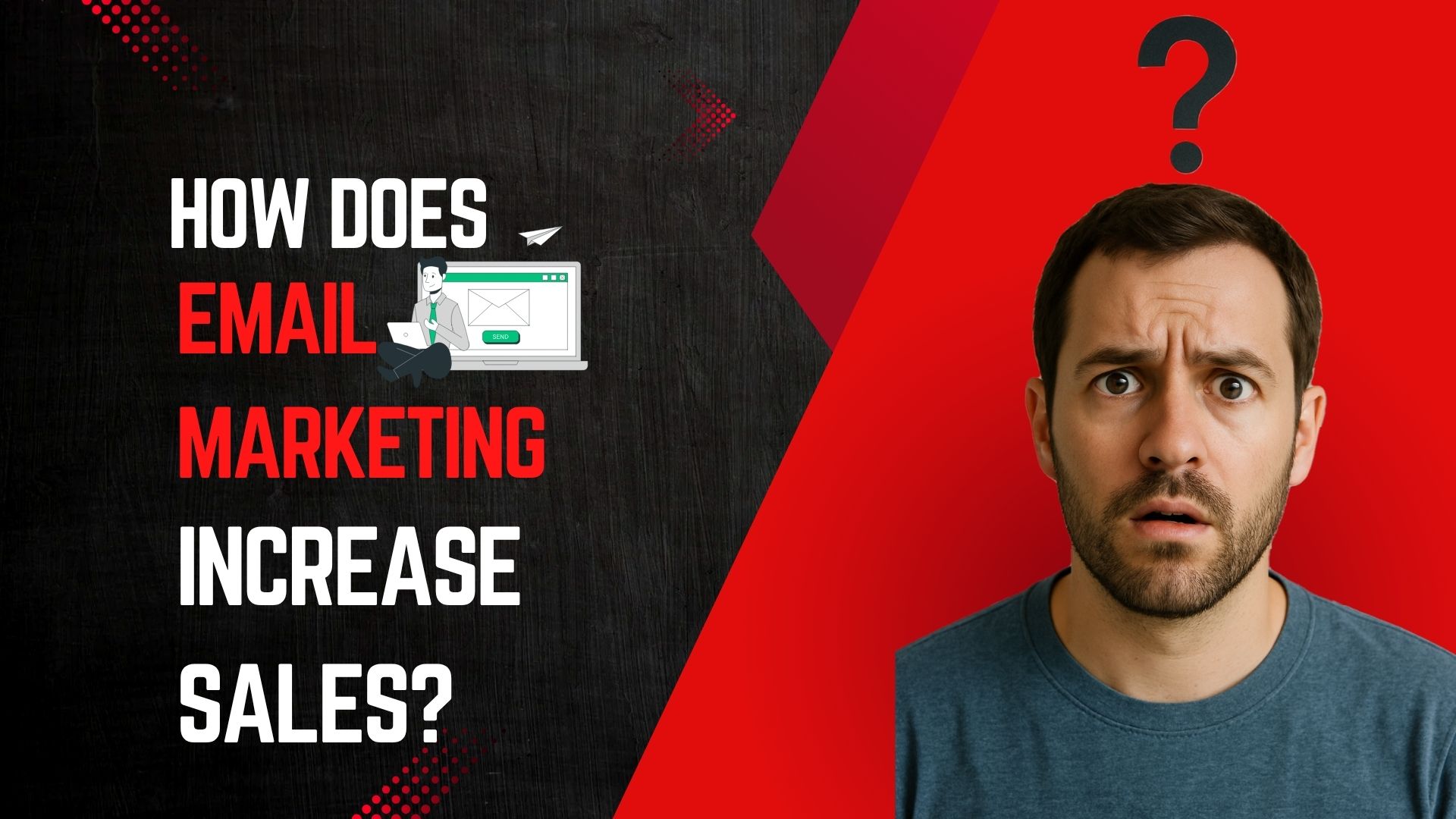
I used to ask myself, does email marketing increase sales or is it just hype? So, I gave it a try. To my surprise, it worked—and better than I thought. Sales went up, people came back, and I felt more connected to my customers. In this article, I’ll share how email marketing helps a business, why it’s so effective, and what worked for me. Let’s get started—you might be surprised too.
I used to ask myself, does email marketing increase sales or is it just hype? So, I gave it a try. To my surprise, it worked—and better than I thought. Sales went up, people came back, and I felt more connected to my customers. In this article, I’ll share how email marketing helps a business, why it’s so effective, and what worked for me. Let’s get started—you might be surprised too.
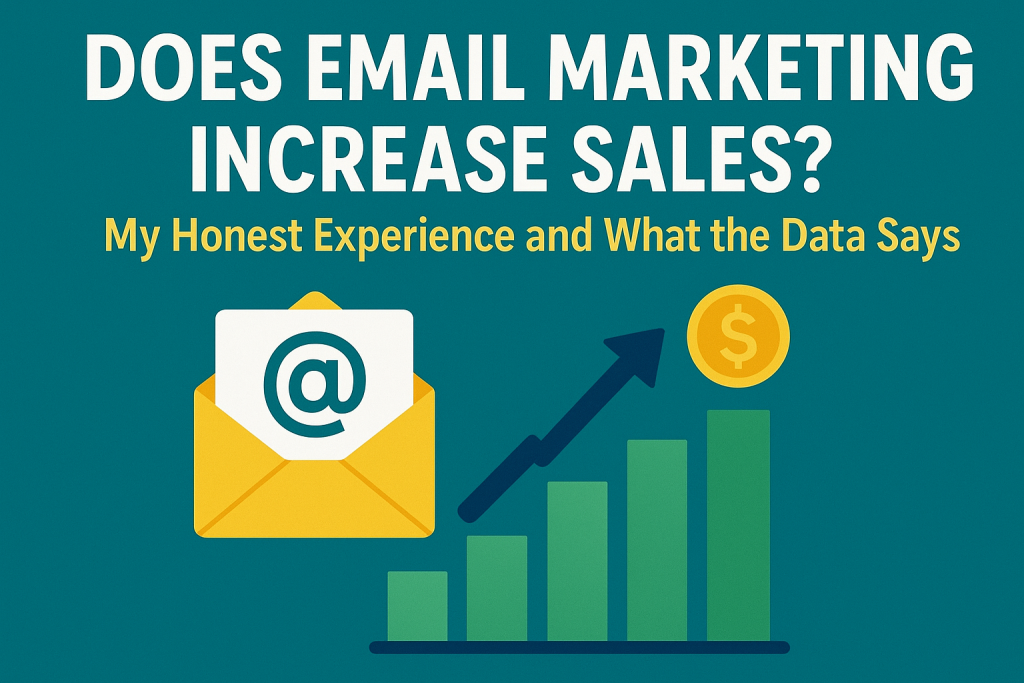
What Is Email Marketing in Sales?
Email marketing in sales means using emails to help people buy things. You send messages to share news, give tips, or offer deals. These emails help people learn about your product and trust your brand.
Email plays a big role in the sales process. When someone signs up for your list, you guide them with emails. You show them what you offer, how it helps, and why they should buy.
There are different types of marketing emails. A newsletter shares updates or tips. A promotion offers a deal or discount. A drip campaign is a set of emails sent one by one over time. Each kind has a job in helping people take the next step.
I first started email marketing to reconnect with cold leads—and I was surprised at the results. People I hadn’t heard from in months began replying, asking questions, and even buying again. That’s when I realized email wasn’t just useful—it was powerful.
Yes, Email Marketing Really Does Increase Sales—Here’s Why
Email marketing really does help boost sales—more than I ever thought. At first, I just hoped it would keep my business in people’s minds. But it did way more than that. My open rates grew, more people clicked my links, and yes—my sales climbed.
Studies show email marketing brings a return of up to $42 for every $1 spent. That’s a huge win compared to other tools. One campaign I ran offered weekly tips with a soft pitch at the end. After three months, my sales went up by 22%. Just from emails!
Why does this work so well? Because email feels personal. It lands right in someone’s inbox, like a note from a friend. Plus, when you send emails often—and make them helpful—people remember you and trust you more.
The real trick is staying consistent and personalized. I used to send the same message to everyone. Now, I group my list and send what each group wants. That small change made a big difference in both replies and sales.
How Does Email Marketing Help a Business Grow?
Email marketing helps a business grow by building strong, lasting connections. You’re not just selling—you’re starting a conversation. When people see your emails often, they remember you. That trust leads to more sales over time.
It also helps people come back. I’ve seen old customers return just because they saw a helpful email or a friendly update. It’s like saying, “Hey, we’re still here—and we’ve got something for you.”
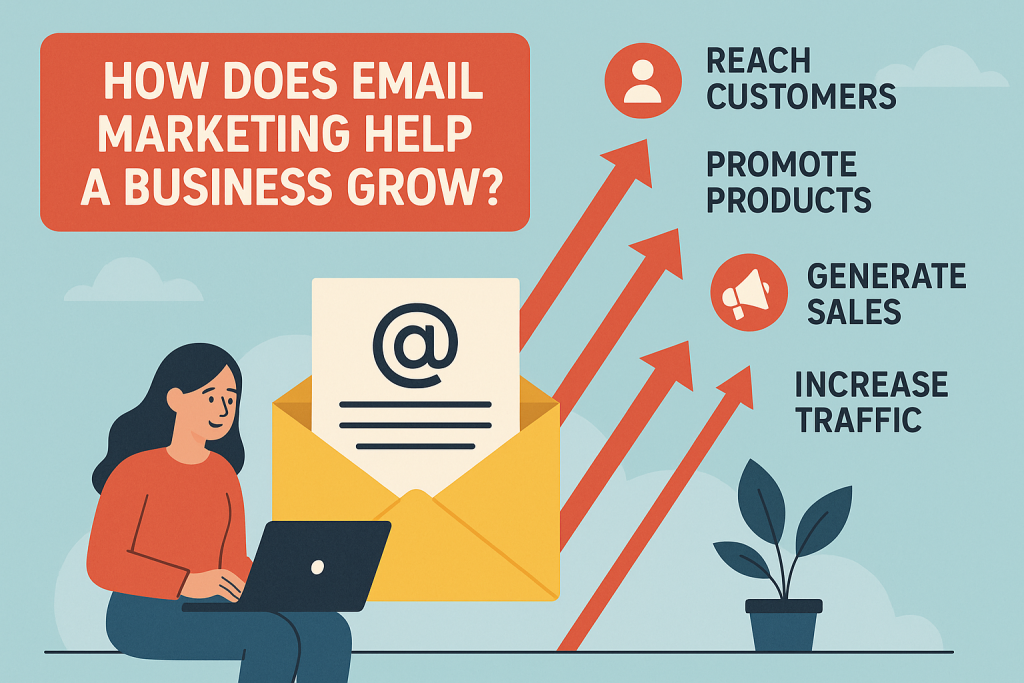
Another way email helps is by teaching people. You can send tips, how-to guides, or stories. This shows your value without being pushy. And when they’re ready to buy, they’ll think of you first.
Emails also drive traffic. I often link to blogs, product pages, or offers. A single email can send hundreds of people to your site in minutes. That’s huge for any business—big or small.
What Are 5 Advantages to Using Email Marketing?
Email marketing is one of the easiest tools to grow your business—and it works. Over time, I’ve found it offers clear benefits that keep stacking up. If you’re wondering what makes it so good, here are five big reasons I keep using it:
1. Direct Access to Your Audience
With email, you talk to people directly. No social media algorithm can hide your message. Your email lands in their inbox, ready to be read. That’s powerful.
Email marketing gives you direct access to your audience without needing to rely on social media algorithms.
2. Cost-Effective with High ROI
Sending emails costs very little, but the return can be huge. For every $1 spent, you could earn up to $42. I’ve seen great returns even with small lists. It’s one of the best low-budget tools out there.
Email marketing is cost-effective and has one of the highest returns on investment among digital tools.
3. Easy to Automate and Scale
Once you set things up, emails can run on their own. I use simple tools to send welcome emails, follow-ups, and promotions. It saves me time—and makes money while I sleep.
Email marketing can be automated, saving time while reaching more people at once.
4. Measurable Performance
You don’t have to guess what’s working. Email tools show open rates, clicks, and sales. I tweak things based on real data—and that helps me grow faster.
Email marketing is measurable—you can track results and improve based on real data.
5. Builds Trust and Loyalty Over Time
People buy from brands they trust. By showing up in their inbox with value—not just sales pitches—you stay top of mind. That trust turns into repeat business.
Email marketing builds trust by offering helpful content, which leads to loyal customers.
Why Is Email Marketing So Effective?
Email marketing works because it feels personal. People check their email every day. Your message goes right to their inbox. It’s not lost in a feed like on social media.
You can also send different emails to different people. This is called grouping. For example, I send one email to new users and another to past buyers. That way, each message fits the person better.
Emails work on phones, tablets, and computers. So no matter where someone is, they can see your message. This makes it easy to stay in touch.
Another great thing is testing. You can try two subject lines and see which one works best. You can change a sentence and check if more people click. Small changes can bring big results.
Once, I ran the same sale two ways—one through email and one on social media. The email got three times more sales. That’s when I knew how strong email really is.
How Does Email Marketing Actually Work?
Email marketing might sound fancy, but it’s really just a step-by-step way to stay in touch. Here’s how it works—from the first click to the final sale.
It starts when someone gives you their email. Maybe they signed up on your website, downloaded a free guide, or joined a giveaway. That’s the first step—they raised their hand and said, “I’m interested!”
Next, you welcome them. I like to send a friendly email that says hello and shares what they can expect. Just like greeting someone at your shop door—it sets the tone and builds trust.
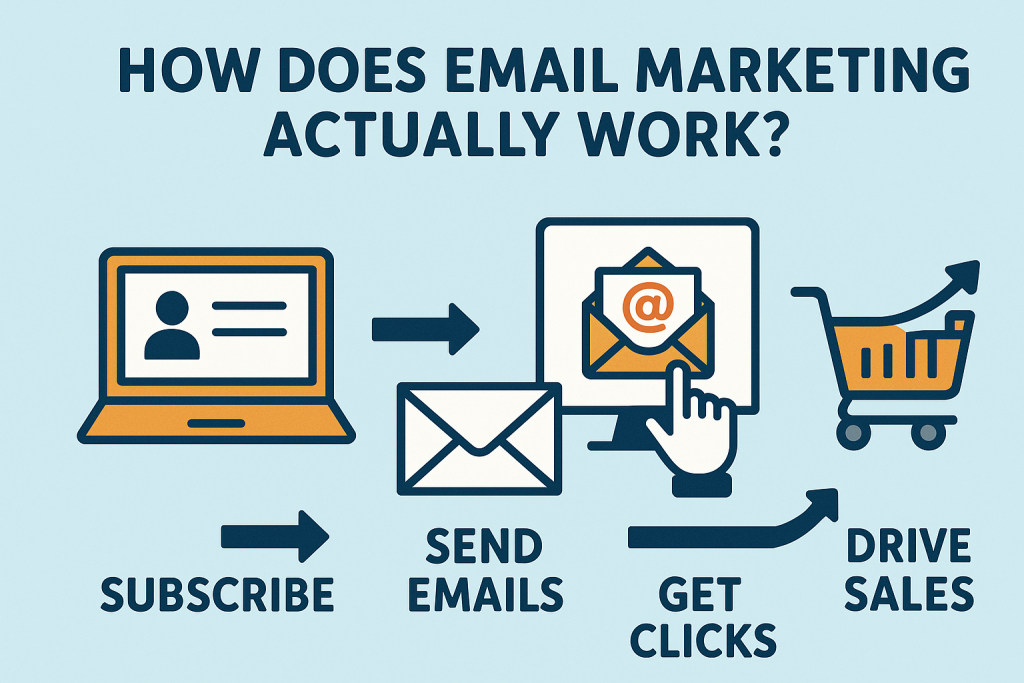
Then you guide them with helpful emails. These could be tips, stories, updates, or special deals. I use tools like Mailchimp and ConvertKit to send these out. It saves time because you can plan the emails ahead and send them automatically.
Over time, these emails turn interest into action. Someone who reads your tips for weeks may finally decide to buy. It’s not about pressure. It’s about showing up and offering value until they’re ready.
For example, I once had a subscriber who didn’t buy for two months. But after one simple email with a customer story, she replied and placed an order. That’s the power of email—it builds trust slowly and steadily.
So, email marketing works like a journey. From signup to sale, each email moves people closer to saying yes. And once it’s set up, it keeps working—even while you sleep.
Why You Should Start Using Email Marketing Today
If you’re still on the fence about email marketing, I get it. I used to feel the same way. It seemed like something only big companies did. But once I gave it a try, I realized—it’s for everyone.
One big reason to start is this: you own your list. Social media is great, but it changes all the time. Algorithms shift, reach drops, and you lose control. With email, your list is yours. No middleman, no filter—just you and your audience.
It also works well with your other channels. I often share blog posts, product updates, or offers through email—and that boosts my social and website traffic too. It’s like adding a quiet, steady engine behind your bigger marketing machine.
And here’s the best part—it doesn’t cost much to start. You don’t need fancy tools or a huge budget. I began with a free plan and a few subscribers. Even then, it made a difference.
Plus, you don’t need to be a tech expert. Most email tools today are super easy. You can drag, drop, and write like you would in any text box. And once you set it up, it runs in the background while you focus on other things.
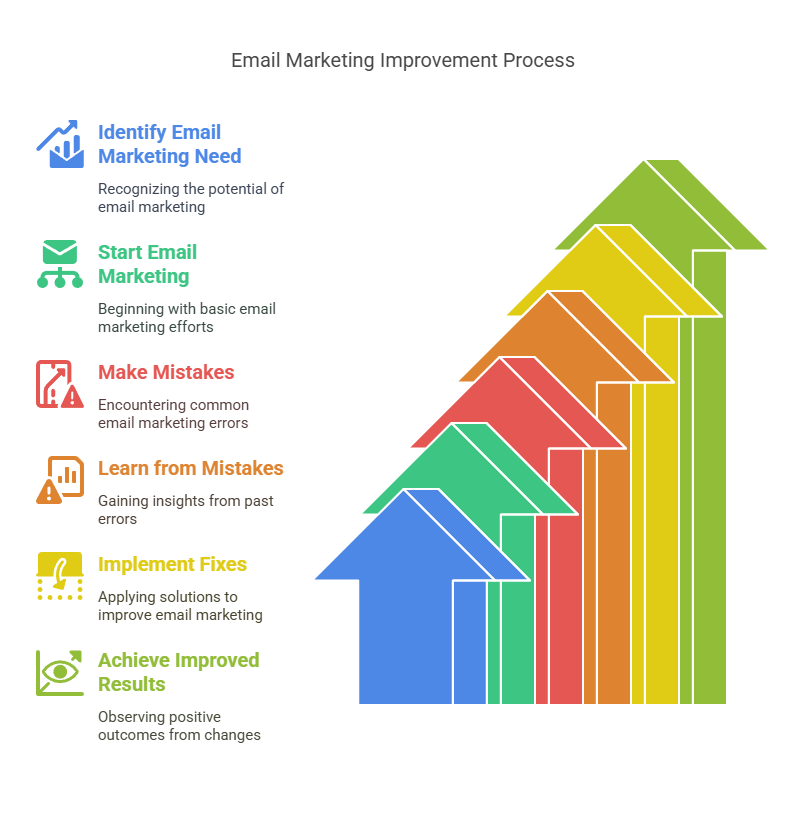
I wish I had started sooner. It’s one of the few tools that keeps giving back—week after week. So if you’ve been waiting for the “right time,” this is it. Start now, even if it’s small. Your future self will thank you.
Common Mistakes That Hurt Sales (and How I Fixed Them)
When I first started email marketing, I thought hitting “send” was enough. But I made some small mistakes that hurt my results more than I realized. Over time, I learned better—and my sales followed.
Mistake 1: Using Boring or Generic Subject Lines
At first, I wrote subject lines like “Our New Offer” or “Monthly Update.” Sounds okay, right? But people ignored them. They didn’t stand out in crowded inboxes.
Weak subject lines lead to low open rates—make them personal, clear, and curiosity-driven.
Fix: Now, I treat subject lines like headlines. I use emotion, questions, or even emojis. One of my best was: “Still interested? This one’s just for you 👀.” It got twice the opens!
Mistake 2: Sending Too Many (or Too Few) Emails
Some weeks, I sent five emails. Other weeks, none at all. No plan. No rhythm. People either got annoyed or forgot I existed.
Inconsistent emailing confuses subscribers—keep a steady and expected schedule.
Fix: I picked a simple plan—one helpful email per week. That balance kept people engaged without overwhelming them.
Mistake 3: Not Segmenting My List
In the beginning, I sent the same email to everyone. New leads, old customers, one-time buyers—they all got the same message.
Sending the same email to everyone can lower relevance and response—segment your list for better results.
Fix: I started creating groups. For example, new subscribers get a welcome series. Past buyers get upsells. It takes a little setup, but the replies and clicks jumped fast.
Mistake 4: Ignoring Mobile Formatting
This one was sneaky. My emails looked fine on my computer, so I assumed they worked everywhere. But on mobile? They were clunky. Long paragraphs, small fonts—hard to read.
Poor mobile formatting makes emails hard to read and leads to lower engagement—always preview your emails on phones.
Fix: Now, I keep things simple. Short sentences, bullet points, and mobile-friendly templates. Most people read emails on phones—so that’s where I test first.
Final Thought: Small Fixes, Big Results
Each mistake seemed small at the time. But when I fixed them, my open rates rose, clicks improved, and more people bought.
Fixing small email mistakes—like better subject lines and segmentation—can lead to higher open rates and more sales.
So, if you’re not seeing results yet, don’t give up. Just tweak, test, and keep learning. Even a 1% improvement can grow into something big over time.
Real-Life Results: My Sales Before and After Email Marketing
When I first started email marketing, I wasn’t expecting much. Honestly, I just wanted to remind people that my business still existed. But the results? They surprised me—in the best way.
Email marketing helped me reconnect with old leads and boosted my sales by over 20% within a few months.
The “Before” Picture
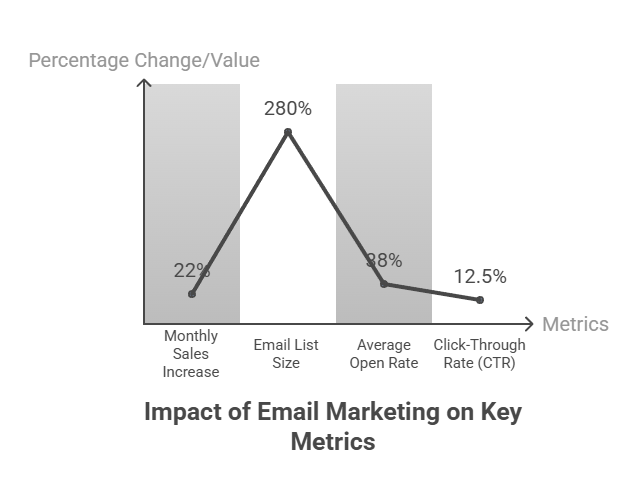
Back then, most of my sales came from word of mouth and occasional posts on social media. It was slow and hit-or-miss. Some weeks were okay, others were silent. I had no real system—just hope and hustle.
Before email marketing, I had no system—just hope and inconsistent sales.
Then I looked at my old contact list—past customers, cold leads, and a few newsletter sign-ups that had gone cold. Instead of leaving them in the dust, I decided to try something different. I wrote a short, friendly email, hit send, and waited.
The First Campaign: Simple but Powerful
The first email was nothing fancy. Just a “Hey, it’s been a while!” message with a small tip and a link to a helpful blog post. That one email brought in six replies and two sales. I was shocked.
A simple re-engagement email brought in replies and instant sales—no discount needed.
That was all the proof I needed. If a casual email could do that, what would happen if I built a real system?
What Happened Next
I created a weekly tips series—nothing salesy, just value. I used ConvertKit to send them automatically. Each email gave advice, shared a quick story, and gently reminded people of my product. No pressure. No spam. Just useful, human content.
Within three months, my email list grew by 40%, my open rates averaged 38%, and sales jumped by 22%. These weren’t just numbers. These were people coming back, asking questions, and buying again.
After starting consistent weekly emails, my sales jumped 22% and open rates stayed near 38%.
At a Glance: My Before vs. After
| Metric | Before Email Marketing | After 3 Months of Emails |
| Monthly Sales | Low & unpredictable | +22% increase |
| Email List Size | ~200 inactive | 280+ and growing |
| Average Open Rate | N/A (wasn’t tracking) | 38% |
| Click-Through Rate (CTR) | N/A | 11–14% |
| Customer Replies | Rare | Regular and engaged |
Consistent email marketing boosted my engagement, CTR, and monthly revenue.
What Made the Difference?
What changed wasn’t just the tools—it was the mindset. I stopped treating email as a megaphone and started using it like a handshake. I made each message feel personal, not pushy.
I learned that people don’t want more noise—they want real help from someone they trust. Once I leaned into that, everything started clicking.
Treat email like a conversation, not a sales pitch—and you’ll see better results.
Takeaway
If you’re wondering whether email marketing really boosts sales—yes, it does. And it doesn’t take magic. It just takes showing up, being helpful, and writing like a real person.
If I can turn a quiet list into a steady stream of replies and sales, you absolutely can too.
Q1: How much does email marketing increase sales?
Email marketing can boost sales by 20–40%, especially when done consistently with value-driven content.
Honestly, I didn’t expect much at first. But after a few months of weekly emails packed with tips and stories (not just sales pitches), I saw a 22% increase in sales. And that was with a small list!
It’s not just my story—studies show email marketing has one of the highest ROIs out there. You could earn $36–$42 for every $1 spent if done right. So yes, it works—and it works well.
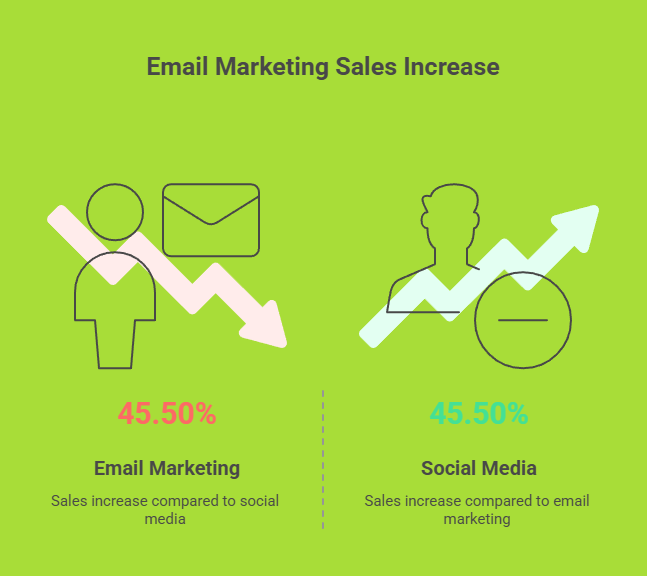
Q2: Is email marketing better than social media?
Email often converts better than social media because it lands directly in someone’s inbox.
Now, don’t get me wrong—social media is great for visibility. But email? That’s where the real magic happens.
In one test, I ran the same promo both on Instagram and in my email list. Email brought 3x more sales. Why? No algorithms, no noise—just a direct, personal note to people who already want to hear from you.
Q3: What is the average ROI for email marketing?
The average ROI for email marketing is around $36–$42 per $1 spent.
It’s one of the best returns in all of digital marketing. Tools like Mailchimp and ConvertKit even give you built-in reports to see what’s working. I started small, and even with basic emails, the return was strong.
And because email is cheap to send, even a small bump in sales can turn into serious gains. It’s like planting seeds that keep blooming again and again.
Q4: Can small businesses benefit from email marketing?
Yes—email marketing is perfect for small businesses due to its low cost and high return.
I’m living proof of that. I started with zero marketing budget and a few cold contacts. No ads, no fancy tech. Just one good email a week.
That effort grew my list, brought back past buyers, and even got new ones through referrals. You don’t need a big team—you just need consistency and heart.
Q5: How long does it take to see results?
You can start seeing small wins in 2–4 weeks, but bigger results often take 2–3 months.
I got my first replies and sales within days of sending my first re-engagement email. But the real shift came after a few months of regular, helpful content.
Email marketing is more like slow cooking than microwaving. You build trust over time—and that’s what brings people back again and again.
Final Thoughts Is Email Marketing Worth It
If you wonder if email marketing is worth it, the answer is yes. It really works.
Email is simple and reliable. It helps me build trust and get more sales. It does this without costing much money.
Email marketing helps you sell more by building trust and keeping customers coming back.
Email marketing is not flashy. It does not need to go viral. It just needs to reach people with helpful messages. When you send good emails often, people notice and buy.
It works best when you treat it like a conversation. Talk to people like friends, not just numbers. Give useful info and keep showing up.
So, is email marketing worth it? For me, it is one of the best tools. If you want to grow your business, start with email. Keep it simple, be real, and let your emails do the work.


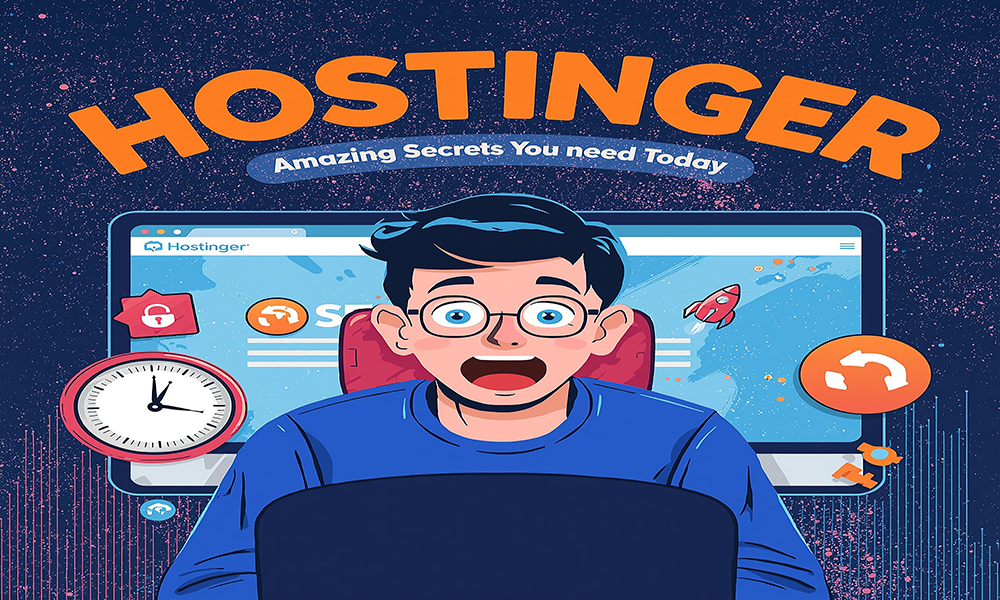
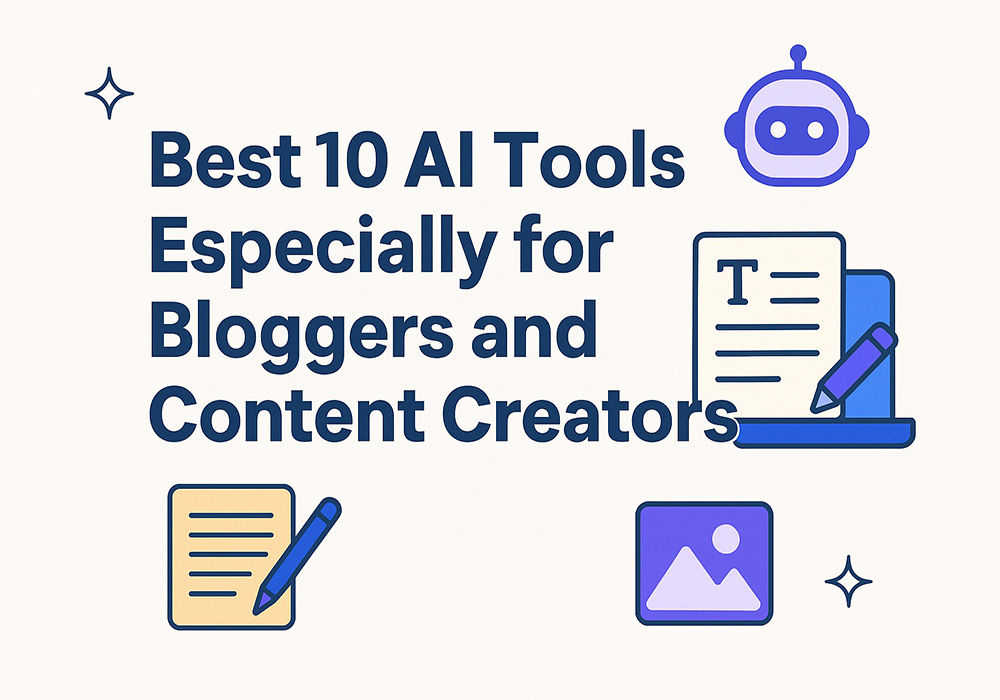
77eghd
lz9av7
owdje8
bre81u
d15cd4
https://t.me/official_1win_aviator/527
https://t.me/s/official_1win_aviator/396
https://t.me/s/ef_beef
Can you be more specific about the content of your article? After reading it, I still have some doubts. Hope you can help me.
I don’t think the title of your article matches the content lol. Just kidding, mainly because I had some doubts after reading the article. https://www.binance.info/es-MX/register?ref=GJY4VW8W